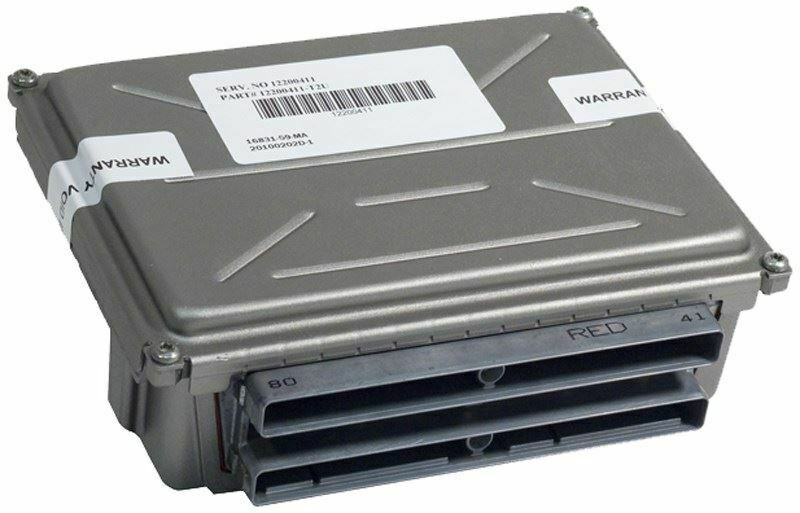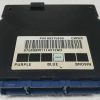Is Your 2001 Duramax Running Rough? The ECM Might Be the Culprit.
The Engine Control Module (ECM), often called the Powertrain Control Module (PCM), is the electronic brain of your 2001 Silverado or Sierra 2500/3500. It’s the command center for your 6.6L Duramax diesel engine, managing everything from fuel injection timing and turbo boost to transmission signals and emissions controls. When this critical component begins to fail, it can cause a cascade of frustrating and difficult-to-diagnose problems, leaving your powerful truck feeling sluggish, unreliable, or even completely inoperable.
This replacement ECM, part number 09388505, is the definitive solution for a faulty original unit. We take the guesswork and high dealership costs out of the equation. Before this module ships, we program it with the latest GM-released software, specifically matched to your truck’s unique Vehicle Identification Number (VIN). This ensures seamless integration and restores the precise operational parameters your Duramax was designed with from the factory. Get your truck back to its peak operational state without the need for an expensive trip to the dealer for programming.
From the Diagnostic Bay
We had a 2001 Sierra 3500 dually come into the shop on a tow truck. The owner had spent a fortune chasing a ghost—the truck would run fine for 20 minutes, then suddenly stall and refuse to restart for hours. He had replaced the fuel filter, the FICM relay, and even two injectors based on another shop’s advice. After plugging in our high-level scanner, we saw intermittent communication loss with the ECM. On a hunch, we carefully inspected the module itself and found subtle signs of internal corrosion on the main board, a common issue for these units located under the battery where leaks can occur. We installed one of our pre-programmed ECMs, performed the security relearn, and the truck fired up instantly. The owner took it for a long test drive and called back ecstatic—the stalling issue was completely gone. It wasn’t a fuel problem; it was a communication breakdown originating from a failing ECM.
Common Symptoms of a Failing 2001 Silverado 2500 ECM
- ✔ Check Engine Light: The most obvious sign, often with codes related to injector circuits, sensor inputs (crank, cam), or internal processor faults.
- ✔ No-Start or Hard Starting: The engine cranks but won’t fire up, or takes an excessive amount of time to start, especially when warm.
- ✔ Poor Engine Performance: Noticeable loss of power, hesitation during acceleration, rough or unstable idle, and decreased fuel economy.
- ✔ Intermittent Stalling: The engine shuts off unexpectedly while driving or idling, often without warning.
- ✔ Communication Errors: Your mechanic’s scan tool is unable to connect to the engine computer, making diagnosis impossible.
- ✔ Transmission Shifting Problems: Harsh shifting or erratic gear changes, as the ECM provides critical data to the Transmission Control Module (TCM).
The Plug-and-Play Solution for Your Duramax
Don’t let a faulty computer keep your heavy-duty truck sidelined. This ECM is a direct-fit replacement, designed to restore factory performance and reliability. The key benefit is our professional VIN programming service. By providing your VIN at checkout, you receive a module that is ready for installation. In most cases, this eliminates the need for expensive dealer-specific tools. After installation, you may only need to perform a simple security relearn procedure (often called a VATS relearn), which can typically be done in your own driveway without any special tools. This process pairs the new ECM to your truck’s anti-theft system.
Guaranteed Fitment
This Engine Control Module is a confirmed fit for the following vehicles equipped with the 6.6L Duramax diesel engine:
- 2001 Chevrolet Silverado 2500 Pickup
- 2001 Chevrolet Silverado 3500 Pickup
- 2001 GMC Sierra 2500 Pickup
- 2001 GMC Sierra 3500 Pickup
This part directly replaces part numbers: 9388505, 97780075, 977800770, 9355100. Please verify the module is located on the driver’s side, front of the engine bay, under the battery tray.
Frequently Asked Questions
What is an ECM and what does it do on my Duramax?
The ECM, or Engine Control Module, is the central computer for your 2001 truck’s diesel engine. It processes information from dozens of sensors to control fuel injection, turbocharger vane position, glow plug operation, and engine timing to ensure optimal power, efficiency, and emissions compliance.
Is this module ready to install when I receive it?
Yes. This ECM is supplied pre-programmed to the specific VIN you provide during your order. This means it will have the correct software and calibrations for your truck’s exact configuration, making installation as simple as possible.
Where is the ECM located on a 2001 Silverado/Sierra Diesel?
The ECM is located in the engine bay on the driver’s side (LH side). You will find it mounted to a bracket underneath the battery and battery tray.
How do I provide my VIN for programming?
After you complete your purchase, you will need to send us your 17-digit Vehicle Identification Number (VIN). We cannot ship your part until we receive this information, as it is essential for the programming process. You can typically find your VIN on your vehicle’s registration, insurance card, or on a plate on the driver’s side of the dashboard visible through the windshield.
Will I need to perform any procedures after installation?
After installing the programmed ECM, you will likely need to perform a Vehicle Anti-Theft System (VATS) relearn, also known as a security relearn. This procedure syncs the new module with your truck’s ignition key and can usually be done without special tools by following a sequence of key cycles. Instructions are widely available online or we can provide guidance.
Does this part fix all potential engine problems?
While a faulty ECM is a common cause for the symptoms listed, this part will not fix issues stemming from other failed components like sensors, wiring, or mechanical parts. Proper vehicle diagnostics are always recommended to confirm the ECM is the point of failure before ordering.


